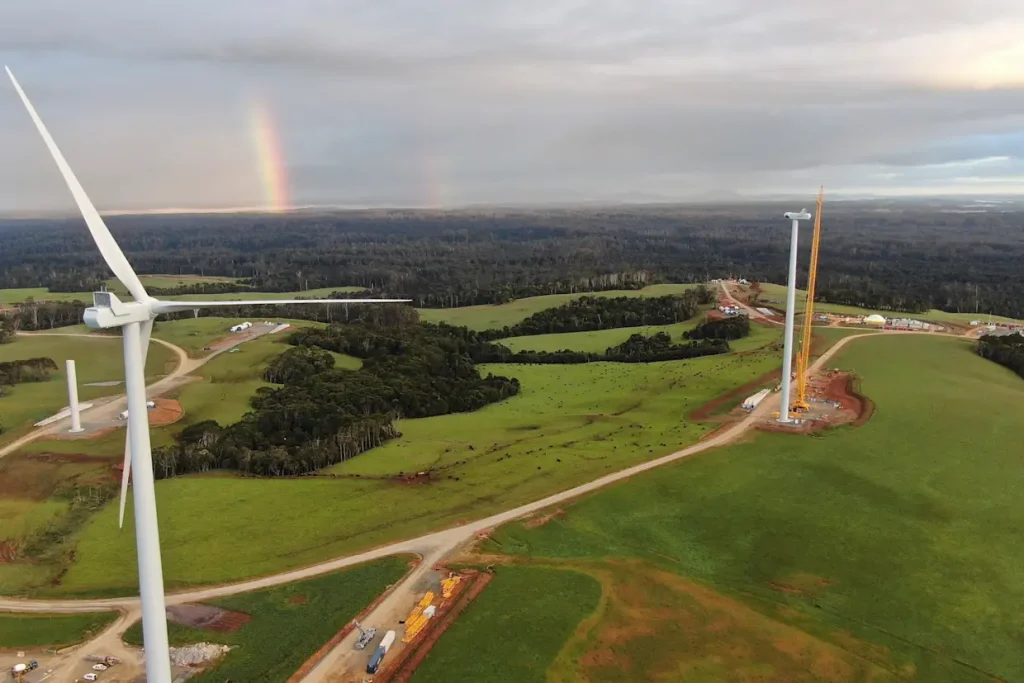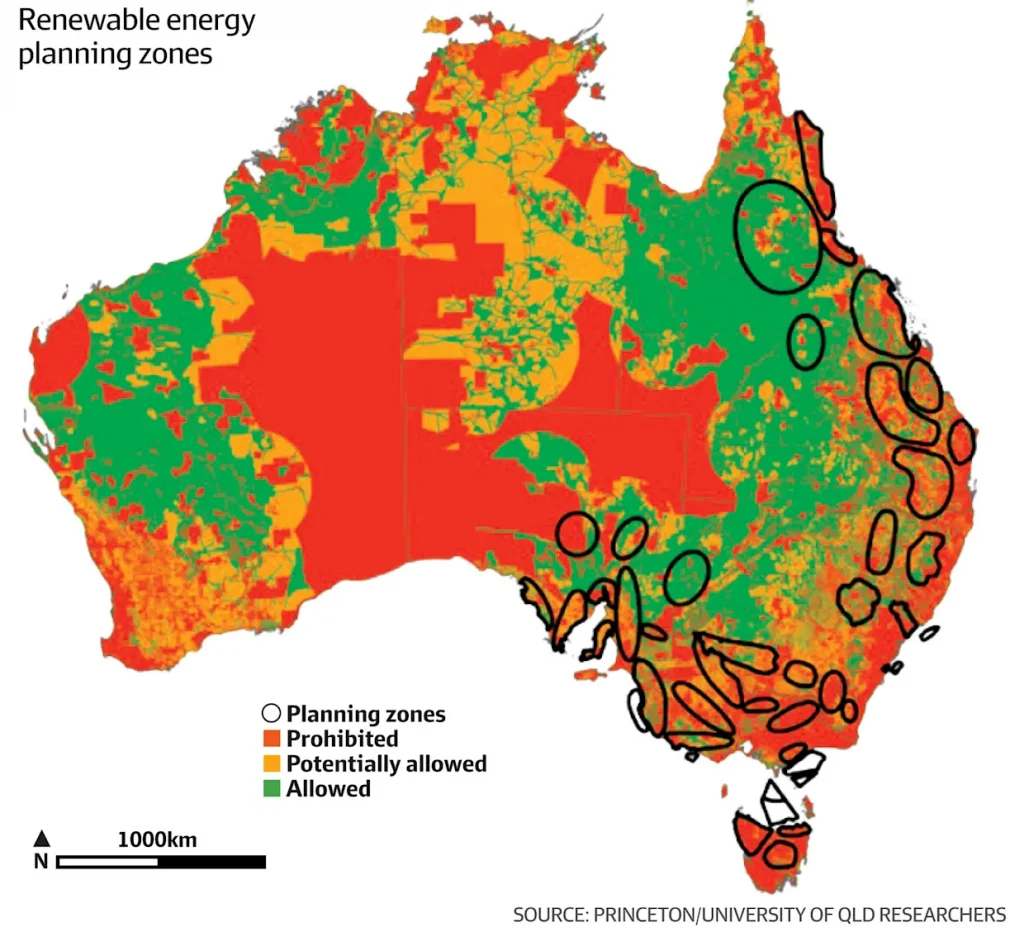
Article by Ryan Cropp, courtesy of Financial Review
05.06.2025
Green activists will slow Australia’s clean energy rollout and jeopardise Labor’s broader climate goals unless governments consider changing the location of planned renewables zones to accommodate environmental and land rights concerns.
New research shows many of Australia’s biggest renewable energy projects are slated for areas that are highly likely to antagonise environmental and farming groups, undermine social licence and threaten net zero targets with costly delays and legal action.

Australia has a goal of achieving 82 per cent renewable energy generation by 2030, which underpins its commitment to achieve 43 per cent emissions reductions on 2005 levels by 2030. Energy experts have warned the target is unlikely to be met unless there is a significant uptick in new projects coming online.
Andrew Pascale, an environmental researcher at Princeton University, said the targets would be put at risk if the government’s energy grid plans prioritised logistics such as proximity to existing infrastructure over biodiversity and land use concerns.
“The amount of land required for the energy transition is massive, and the speed at which we need to be deploying renewable infrastructure is unprecedented,” he said.
“[But] if 90 per cent of the land in a proposed renewable energy zone will trigger a response from conservation groups, then it may be time to rethink.”
According to the study published in Nature, Australia’s renewables rollout will require around 110,000 square kilometres of land being made available for energy infrastructure, which is about 1.7 times the size of Tasmania.
But consultations with groups including the National Farmers Federation, the National Native Title Council and the Australian Conservation Foundation revealed that many state government-declared renewable energy zones were in areas likely to raise biodiversity and land use problems.

Some zones in Tasmania, Victoria and Far North Queensland had an overlap with biodiversity exclusion areas of almost 90 per cent, the study found.
Some wind projects in Tasmania have already found themselves mired in environmental delays, including ACEN’s Robbins Island project, which is opposed by wildlife groups such as the Bob Brown Foundation, who say it will decimate an endangered species of orange-bellied parrot.
Natalie Collard, the chief executive of campaign group Farmers for Climate Action, said renewables projects that harmed nature would undermine the social licence required for the transition in regional areas.
“Clean energy projects don’t get a free pass on nature issues from us. Pretending clean energy projects have zero impact on nature is not credible, and we need to get the balance right,” Collard said.
Environment Minister Murray Watt has begun work on the government’s renewed attempt to overhaul Australia’s environmental laws, which was proposed during the last term of parliament but ultimately shelved by Labor in the lead-up to the federal election.
A spokesman for Climate Change and Energy Minister Chris Bowen said Australia’s environmental laws already required renewable energy proponents to take into account First Nations land rights, community consultation and environmental impacts.
“Commonwealth support for renewable energy infrastructure through the Capacity Investment Scheme … prioritises proper First Nations engagement and is conditional on stringent [environmental] approvals.”
Australian Conservation Foundation policy adviser Brendan Sydes said it was possible to roll out renewable energy infrastructure and protect nature at the same time.
“Australia faces joint crises of climate and biodiversity. There’s no need, on our already over-cleared continent, to knock down rainforests or destroy threatened species habitats for renewable energy projects.
“This research highlights the importance of the government getting moving on its environmental law reforms so renewable energy infrastructure can be sited appropriately while protecting Australia’s unique wildlife and flora.”
University of Queensland academic James Watson, one of the authors of the study, said grid planners could avoid long-term headaches by making environmental issues a first-order consideration.
“We can’t have our cake and eat it too, but you can have trade-offs that minimise the losses. It’s not a zero-sum game.
“We need a net zero solution. You need renewable energy or some kind of nuclear option, but Australians have rejected nuclear so there’s really one option and that’s to do renewables well.”
The Australian Energy Market Operator was contacted for comment.
